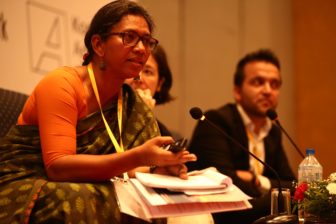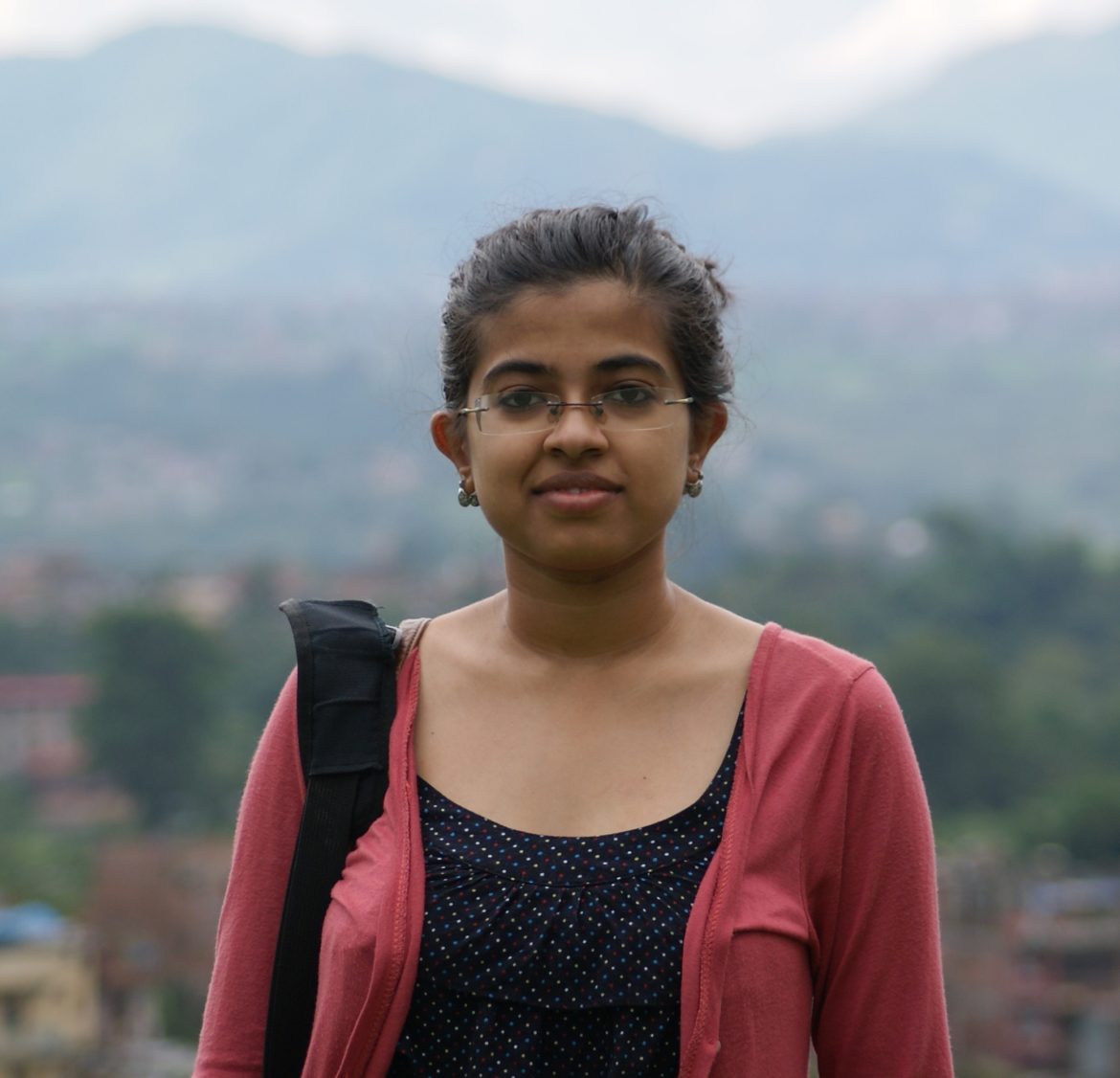Someone always benefits from war and it’s up to journalists to make sense of history as it unfolds. That work, often done in the midst of violence and chaos, is essential to exposing who is truly stoking conflict, abusing power, or striking deals behind closed doors.
Three veteran reporters spoke at the Second Asian Investigative Journalism Conference in Kathmandu, Nepal about the challenges — and risks — of covering conflicts in their countries.

Covering Conflict panel. Photo by Milan Poudel.
“Afghanistan has been the most dangerous country, after Syria, for journalists. More than 58 journalists have been killed in the last few years [in addition to] kidnappings, disappearances and imprisonment,” said Mirwais Jalalzai, an Afghan correspondent for TRT News & DW. “And we have problems not only with Taliban who are fighting against the government but also with the government regarding freedom of the press … We are not only working as journalists but fighting as journalists there,” he added.
Despite obstruction from various parties to the conflict, it’s the journalist’s job to go beyond official versions of the story, whether government or opposition, said Malini Subramaniam, an Indian freelance journalist who covered the Maoist conflict in her country.
Getting that story behind the story can require investigative reporting and data skills, according to Maria Teresa Ronderos, director of Open Society Program on Independent Journalism.
“First of all, you have to look for the profiteers. With wars and conflict, somebody is always profiting,” said Ronderos, who moderated the conference panel.
Using a database to track individual events can help identify who is really controlling events and what they’re getting out of it, as well as paint the whole picture of what’s happening.
“It is important to have a systematic database [and not] simply report on the victims of everyday [violence],” Ronderos said. In her native Colombia, mapping data of massacres helped reveal connections and motives.
Journalists shouldn’t ignore the value of post-conflict reporting, added Kanak Mani Dixit, a Nepali journalist and founding editor of the magazine Himal SouthAsian.
“Conflict coverage may be black and white and need personal courage but post-conflict needs much more research,” said Dixit, who covered the Maoist insurgency in Nepal. Reports from international organizations and courts, as well as donors, can be useful sources for post-conflict reporting, according to Dixit.
Reporters may face some common challenges when covering conflicts in remote areas, including language and physical dangers, Subramaniam said. “News collection at ground zero is both risky and difficult,” she noted. In addition, it may be difficult to verify facts with all the parties to the conflict, and journalists may face pressure to report a specific version of the story in armed conflict areas.
Knowledge of humanitarian and development work, as well as respect for impartiality, neutrality, and independence has worked to her advantage. “I constantly use this to send across a message that no party will be benefitting from any kind of report that we are doing,” said Subramaniam.
When conflict breaks out, local journalists may have to learn on the job, as Nepali journalists did with the Maoist insurgency in 1996, according to Dixit.
“It is really the local Nepali speaking journalists that were covering this conflict. So if there is any credit to be given for the fact that the reality came out to the urban spaces and overseas, it is to the local on-the-ground journalists of Nepal,” said Dixit. “They didn’t have a comparative knowledge to know how to cover it, they learned on the job.”
But even seasoned war journalists have to adjust and think on their feet, as situations on the ground can change in a matter of minutes, said Jalalzai, describing an incident in 2015, when the Afghan city of Kunduz fell to the Taliban just before his scheduled interview with some commanders. Jalalzai and his cameraman switched gears and covered a major hospital bombing in the area instead.
“In war zones, it is really up to the journalists, to the decision of going forward a few yards to the danger zone to cover a story or to avoid it” Jalalzai said.

Preeti Karna is a freelance journalist from Nepal and a student of Media Studies at Kathmandu University.
